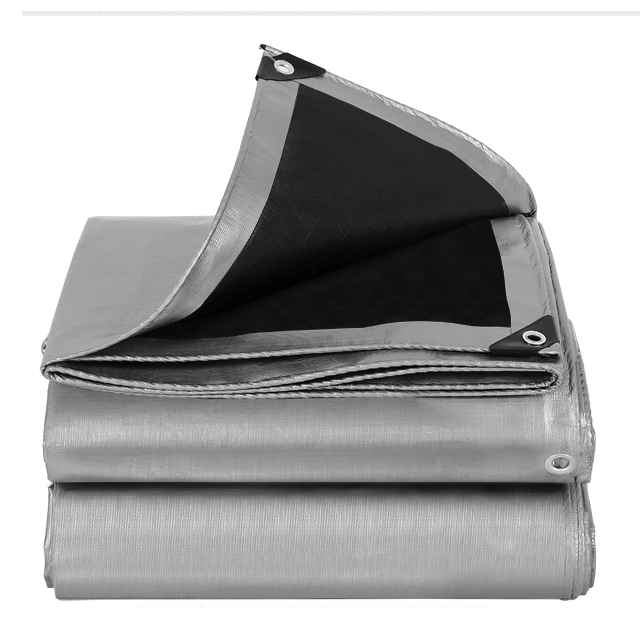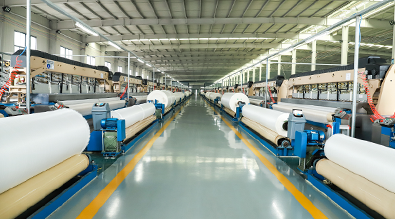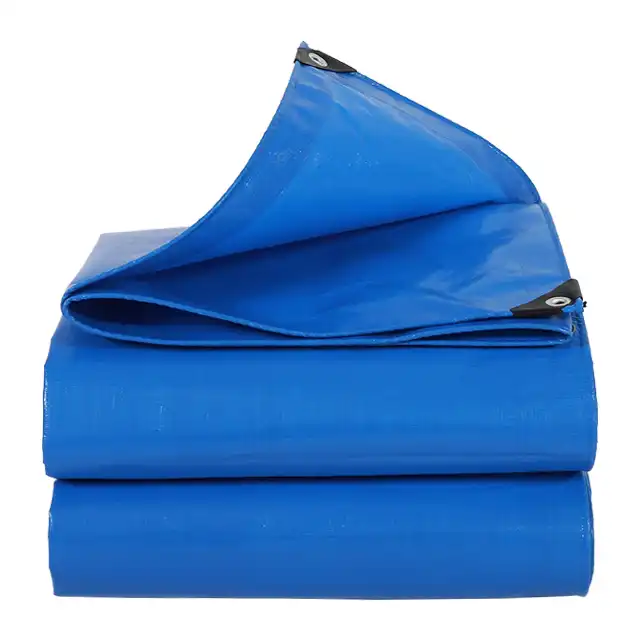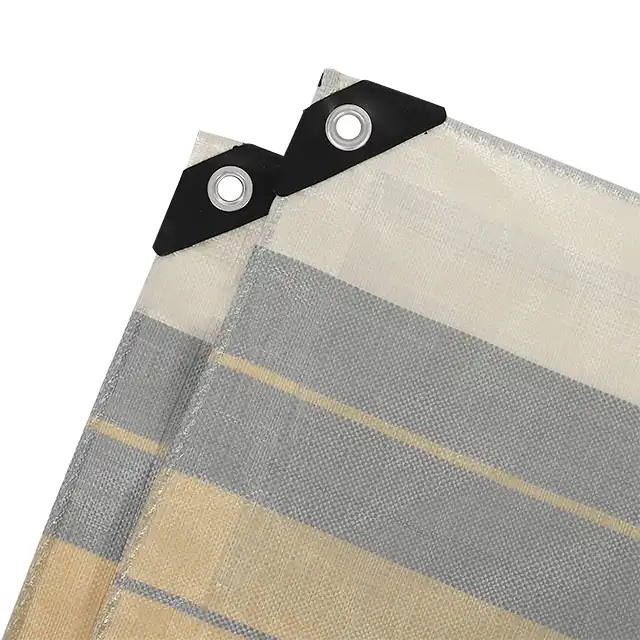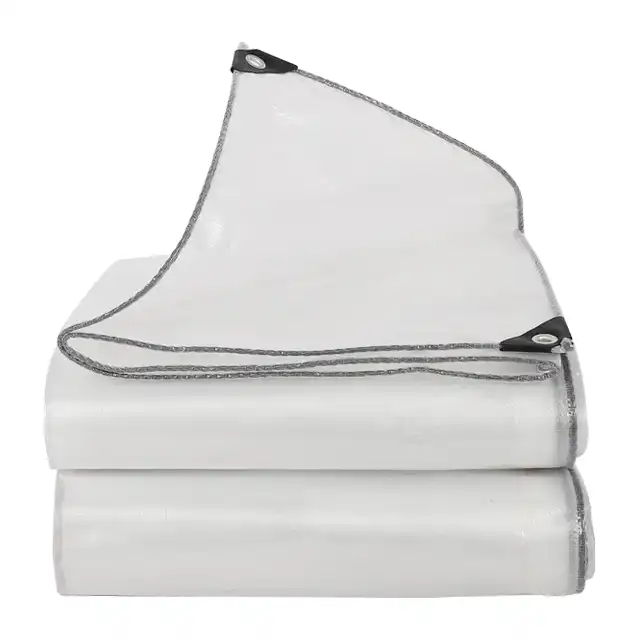Common Misconceptions About Tarpaulins and How to Address Them
Have you ever avoided purchasing a tarpaulin because you believed they were too expensive, flimsy, or wouldn't last through harsh weather conditions? These common tarpaulin misconceptions prevent many consumers and businesses from making informed decisions about protective covering solutions. Understanding the truth behind these misconceptions is crucial for anyone seeking reliable, cost-effective protection for their assets, equipment, or construction projects. This comprehensive guide addresses the most prevalent myths surrounding tarpaulins and provides factual information to help you make confident purchasing decisions.
The "All Tarpaulins Are the Same" Misconception
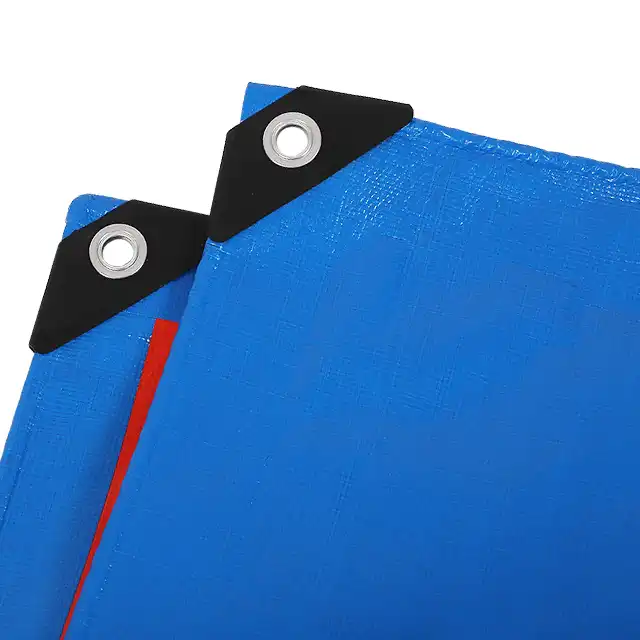
-
Understanding Tarpaulin Material Variations
One of the most widespread misconceptions about tarpaulins is that all products in this category offer identical performance characteristics. This belief stems from a fundamental misunderstanding of tarpaulin construction and material science. Modern tarpaulin manufacturing involves sophisticated processes that create vastly different products for specific applications. High-quality tarpaulins like those produced using high-density polyethylene (HDPE) woven fabric combined with low-density polyethylene (LDPE) coating represent advanced engineering that delivers superior durability and weather resistance. The reality reveals significant differences in tarpaulin construction, weight specifications, and performance capabilities. Premium tarpaulins utilize tightly woven polyethylene fibers that are then laminated on both sides, creating a robust barrier against environmental elements. These tarpaulin facts demonstrate how manufacturing processes directly impact product longevity and effectiveness. Professional-grade products feature mesh counts ranging from 10x10 to 14x14, thickness variations from 7 to 12 mil, and UV treatment levels between 1% and 7%, all of which influence the final product's performance characteristics.
-
Quality Standards and Performance Metrics
Professional tarpaulin manufacturers implement rigorous quality control systems that monitor every production stage, ensuring consistent product quality that meets international standards. ISO 9001:2015 certification represents a commitment to quality management systems that many consumers overlook when evaluating tarpaulin options. Third-party testing laboratories regularly evaluate tarpaulin performance, providing independent verification of waterproofing capabilities, tear resistance, and UV protection levels. The misconception that cheaper alternatives provide equivalent protection often leads to costly replacements and inadequate coverage when protection is most needed. Understanding tarpaulin specifications helps consumers recognize that products ranging from 65gsm to 280gsm weight classifications serve different purposes and offer varying levels of protection. Quality tarpaulins incorporate features like arctic flexibility, anti-corrosion properties, and shrink-proof construction that generic products cannot match.
The Price vs. Value Misconception in Tarpaulin Selection
-
Breaking Down Cost Assumptions
Many people often avoid using tarps because of the misconception that heavy duty tarpaulins are expensive, but this belief fails to consider the total cost of ownership over time. Professional tarpaulin evaluation requires analyzing initial purchase price against expected lifespan, replacement frequency, and protection effectiveness. High-quality tarpaulins with proper UV treatment can provide years of reliable service, while cheaper alternatives may require frequent replacement, ultimately costing more over time. Bulk purchasing options, wholesale pricing structures, and manufacturer-direct sales significantly reduce per-unit costs for businesses and contractors requiring multiple tarpaulins. Many tarpaulin suppliers offer competitive pricing tiers based on volume requirements, making professional-grade products accessible to various budget levels. Understanding these pricing dynamics helps buyers make informed decisions that balance upfront investment with long-term value.
-
Investment Protection Analysis
Quality tarpaulins protect valuable assets, equipment, and materials from weather damage, theft, and environmental contamination. The cost of replacing damaged goods often far exceeds the investment required for proper tarpaulin protection. Construction sites, agricultural operations, and transportation companies recognize that premium tarpaulin products prevent costly delays, equipment damage, and material waste that can disrupt operations and impact profitability. Professional tarpaulin manufacturers provide detailed specifications that allow buyers to calculate protection value based on specific application requirements. Features like 100% waterproof construction, tear resistance, and UV treatment extend product lifespan while maintaining protective integrity. These tarpaulin facts support informed purchasing decisions that prioritize long-term value over short-term cost savings.
Debunking Durability and Weather Resistance Myths
-
Weather Protection Capabilities
A persistent misconception suggests that tarpaulins cannot withstand extreme weather conditions or provide reliable long-term protection. This belief often stems from experiences with low-quality products that lack proper construction and weather-resistant features. Professional-grade tarpaulins incorporate multiple protection layers, including UV-stabilized materials that resist sun damage, waterproof coatings that prevent moisture penetration, and reinforced construction that withstands wind stress. Modern tarpaulin manufacturing utilizes advanced materials and construction techniques that deliver exceptional weather resistance across various climatic conditions. Products featuring high-strength yarn construction provide extra UV protection against harmful sun rays and fading, while specialized coating processes ensure waterproofing integrity over extended periods. These technical specifications demonstrate how proper tarpaulin selection provides reliable protection in challenging environmental conditions.
-
Structural Integrity and Longevity
Quality tarpaulins demonstrate remarkable structural integrity through features like tear resistance, puncture protection, and dimensional stability. Manufacturing processes that utilize Korea-imported automatic water-jet looms create fabric structures with superior strength characteristics that maintain protective capabilities under stress. Professional tarpaulin products undergo rigorous testing to verify performance claims and ensure consistent quality standards. The misconception that tarpaulins are inherently fragile overlooks the engineering advances that have transformed these protective covering solutions. Modern products feature fabric widths up to 5 meters without joints, eliminating weak points that could compromise structural integrity. Advanced coating techniques and quality control systems ensure that each tarpaulin meets specifications for waterproofing, durability, and environmental resistance.
Application Versatility and Customization Misconceptions
-
Multi-Purpose Functionality
Many consumers believe that tarpaulins serve limited applications or cannot be customized for specific requirements. This misconception restricts their understanding of how versatile these protective solutions can be across industries and applications. Professional tarpaulin products serve diverse functions including truck covers, aquaculture applications, construction protection, agricultural uses, and specialized industrial applications. Customization capabilities allow manufacturers to produce tarpaulins that meet specific dimensional requirements, color preferences, and performance specifications. Make-to-order production systems accommodate unique customer requirements while maintaining quality standards and competitive pricing. This flexibility ensures that buyers receive products optimized for their specific applications rather than compromising with generic solutions.
-
Industry-Specific Solutions
Different industries require specialized tarpaulin characteristics that address unique environmental challenges and operational requirements. Aquaculture applications demand impermeable materials that resist water penetration while maintaining flexibility in marine environments. Construction sites require heavy-duty products that withstand debris impact and provide reliable weather protection for extended periods. Understanding these application-specific requirements helps dispel misconceptions about tarpaulin limitations and demonstrates how proper product selection enhances operational efficiency. Professional manufacturers maintain extensive product lines that address various industry needs while providing customization options for specialized applications. This approach ensures optimal performance across diverse operational environments.
Manufacturing Quality and Standards Misconceptions
-
Production Process Excellence
Misconceptions about tarpaulin manufacturing often stem from assumptions about production methods and quality control systems. Professional manufacturers utilize advanced production equipment including high-tech extruding machines for yarn production, automatic water-jet looms for fabric weaving, and precision coating machines for protective layer application. These sophisticated manufacturing processes ensure consistent product quality and performance characteristics. Modern tarpaulin facilities incorporate multiple production stages that include yarn extruding with thickness ranges from 400D to 2500D, fabric weaving using unique 5m and 4m width machines, fabric coating with professional quality control, and finished product processing through dedicated production lines. This comprehensive manufacturing approach delivers products that meet international quality standards and customer specifications.
-
Quality Assurance Systems
Professional tarpaulin manufacturers implement comprehensive quality monitoring systems that track every production process stage, ensuring consistent product quality and performance reliability. ISO certification requirements mandate rigorous quality control procedures that verify material specifications, construction integrity, and performance characteristics. Third-party testing laboratories provide independent verification of product claims, supporting consumer confidence in manufacturer specifications. These quality assurance systems address misconceptions about manufacturing consistency and product reliability by providing verifiable performance data and construction specifications. Regular testing protocols evaluate waterproofing effectiveness, UV resistance, tear strength, and dimensional stability across production batches, ensuring that customers receive products that meet advertised specifications and performance expectations.
Conclusion
Common misconceptions about tarpaulins prevent many potential users from accessing effective, cost-efficient protective solutions that could significantly benefit their operations. Understanding tarpaulin facts, quality standards, and application versatility enables informed decision-making that balances performance requirements with budget considerations. Professional manufacturers provide reliable products that deliver long-term value through superior construction, weather resistance, and customization capabilities.
Cooperate with Linyi Shengde Plastic Co., Ltd.
As a leading China tarpaulin factory and China tarpaulin supplier, Linyi Shengde Plastic Co., Ltd. has established itself as a premier China tarpaulin manufacturer since 2003. Our commitment to excellence has made us a trusted China tarpaulin wholesale partner for customers seeking high quality tarpaulin solutions at competitive tarpaulin prices. With over 20 years of experience and partnerships with UNHCR, IOM, ICRC, and UNICEF, we guarantee reliable tarpaulin for sale that meets international standards.
Our state-of-the-art facilities feature 30+ high-tech extruding machines, 400+ Korea-imported automatic water-jet looms, and advanced coating equipment that ensures superior product quality. With ISO 9001:2015 certification and extensive third-party testing validation, we deliver tarpaulins that exceed customer expectations. Our monthly production capacity of 4000MT and customization capabilities make us the ideal partner for your tarpaulin requirements. Contact us at info@shengdetarp.com for personalized solutions and competitive pricing.
FAQ
Q: Are all tarpaulins waterproof?
A: No, waterproofing varies by quality and construction. Professional-grade tarpaulins feature 100% waterproof coatings, while basic products may only offer water resistance.
Q: How long do quality tarpaulins typically last?
A: High-quality PE tarpaulins with UV treatment can last 3-5 years with proper care, while premium products may exceed this lifespan depending on usage conditions.
Q: Can tarpaulins be customized for specific applications?
A: Yes, professional manufacturers offer customization options including size specifications, color selection, weight variations, and specialized features for specific applications.
Q: What's the difference between PE and PVC tarpaulins?
A: PE tarpaulins are lightweight and cost-effective for general use, while PVC tarpaulins offer superior durability and longevity for heavy-duty applications.
References
1. "Polyethylene Tarpaulin Construction and Performance Standards" - Industrial Textile Association Research Division
2. "Weather Resistance Testing Methods for Protective Fabric Materials" - International Standards Organization Technical Committee
3. "UV Protection and Longevity Studies in Synthetic Fabric Applications" - Materials Science Institute Research Group
4. "Quality Management Systems in Textile Manufacturing: A Comprehensive Analysis" - Manufacturing Excellence Council Publications
